Manufacture of traditional-style pickled food and grower of organic vegetables
How to make fermented food Agriculture

How to make japanese fermented food
How to make fermented food
- Shio Koji (Salt koji)
- Itis an umami-rich, slightlysweet fermented condiment which you can easily use to enhance your everyday
cooking.
- Amazake(Sweet rice drink)
- Amazake is a naturally sweet rice drink. The sweet taste comes from the
koji enzymes which break down the carbohydrates in the rice into sugar.
- Nukazuke(Rice bran pickled vegetables)
- Nukazuke are traditional Japanese pickles made using a rice bran bed
- Doburoku (Unclarified SAKE)
- Doburoku is considered a parent of Japanese sake. It is an unfiltered,
alcoholic beverage made from rice.
Sio koji - Salt koji
Cooking with salted rice malt is easy and tasty, so you should try it!
“Shio Koji” is an umami-rich, slightly sweet fermented condiment which
you can easily use to enhance your everyday cooking. For example, replace
salt in your sauces, stews etc. with shio koji to give them a boost of
flavour, use it to marinate chicken, meat or fish for about 24 hours before
cooking it to make it more tender and enhance its umami taste, or simply
marinate your raw vegetables in shio koji for 5 hours to give them some
extra kick before eating them as a snack or in a salad (this is called
“kojizuke” or koji pickles). The possibilities are truly limitless.
Ingredients
- 250g rice koji
- 270g water
- 90g salt
How to make it
- Boil the water and let it cool down to room temperature.
- In a clean vessel, mix the salt and the rice koji. Add the water. Mix
well with a clean tool. Cover with a clean cloth.
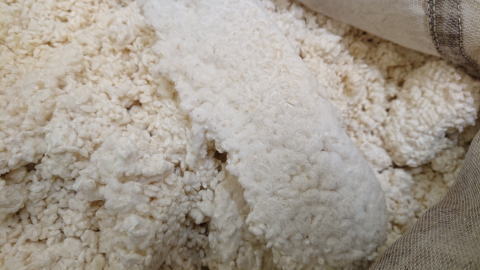
- Let ferment at room temperature and mix every two days with a clean tool. The fermentation will take between 10 and 20 days depending on the temperature. In summer, it should be done after around 10 days, in winter after 15-20 days. It should have a pleasant umami, slightly sweet taste with a floral aroma.
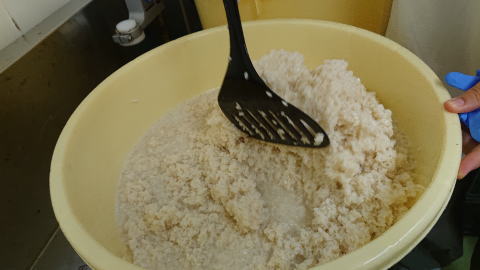
- Once done, mix in a blender for a smooth and versatile texture. Store
your finished shio koji in the fridge, it will keep for several months.
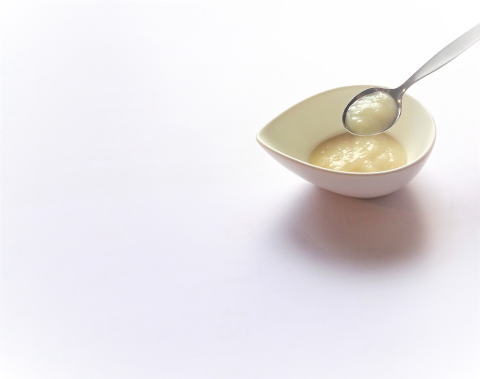
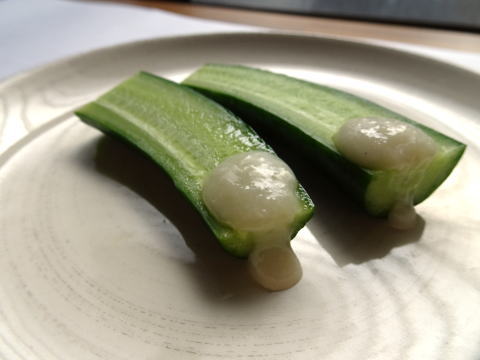
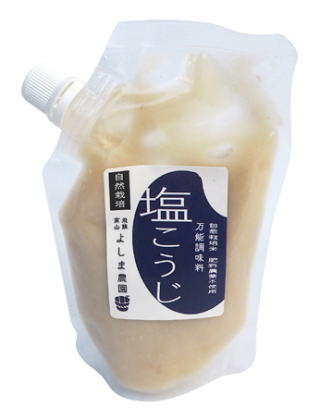
Amazake (Sweet rice drink)
The sweet taste comes from the koji enzymes which break down the carbohydrates in the rice into sugar.
“Amazake" is a naturally sweet rice drink. The sweet taste comes from the koji enzymes which break down the carbohydrates in the rice into sugar. It contains a lot of easily digestible vitamins and amino acids.You can enjoy it as a warm or cold drink. In winter, try it for example with some ginger or other spices and enjoy its heartwarming effect. You can also blend it with your favourite fruits and enjoy it as a smoothie, add some to your morning porridge, or use it as a natural and tasty sweetener in your baking, desserts or drinks.
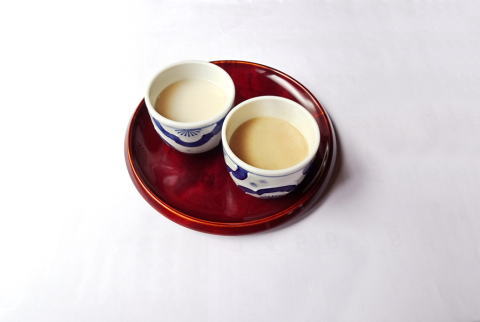
Amazake also blends well in savoury dishes. Try mixing some into your next omelet for example, this will make it fluffy and give it a pleasant sweet note.
Ingredients
- 170g cooked rice
- 170g water
- 250g rice koji
How to make it
- Warm the water to 60°C.
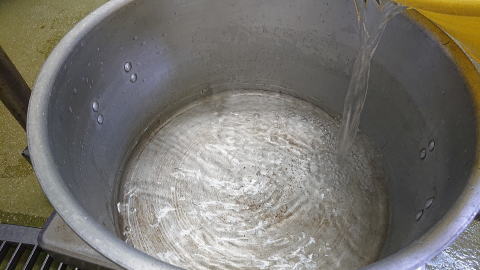
- Add the rice koji and the cooked rice.
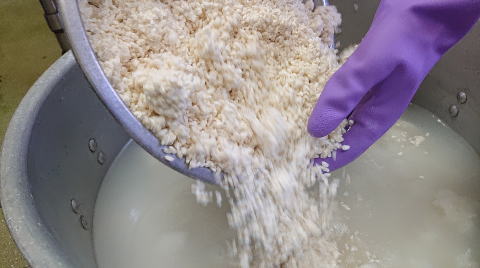
Mix well and keep at 55°C-60°C for about 8-12 hours.
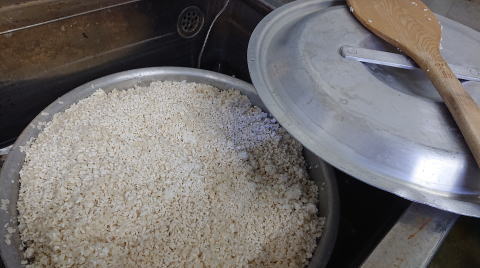
A rice cooker or a yogurt maker work best for this. Keep the lid of the
rice cooker slightly open so that the temperature stays around 60°C.
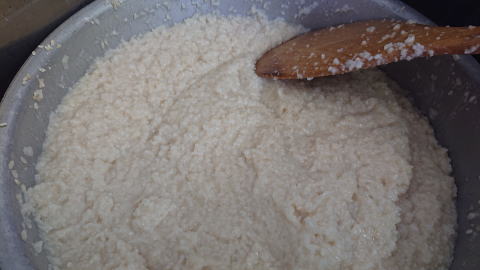
If you don’t have a rice cooker or a yogurt maker, you can use a thermos
bottle or the oven instead. Thermos bottle: fill the bottle with boiling
water to warm it up, pour the water away and fill it with the amazake mixture.
Oven: set the oven temperature at 80°C (the minimum temperature for most ovens) and keep the door slightly open with a wooden spatula or similar to make sure the temperature stays around 60°C.
- Mix every 2 hours. At the beginning, mixing will be difficult as the
mixture is still solid. This will get easier as the enzymes breakdown the
rice and the mixture becomes more liquid (after about 4 hours).
- Check sweetness after 8 hours and let ferment for a bit longer if you
would like it sweeter. Once done, keep your amazake in the fridge. It should
keep well for about a month. Open the bottle from time to time and close
it again to release any gas that might have formed.
- Note: you can also make amazake with brown (whole grain) rice. It has
a more pronounced taste compared to the one with white rice. Experiment
and see what you like best!
Nukazuke” - Rice bran pickled vegetables
Nukazuke are traditional Japanese pickles made using a rice bran bed (“nukadoko”).
The resulting pickles are crunchy, with a unique briny taste and loaded with probiotics. Typical nukazuke pickles include cucumbers, carrots, daikon radish, eggplants, cabbage, turnips. Vegetables with too much water (such as tomatoes) are not suitable. The important thing with nukazuke is to have a good nukadoko, so properly maintaining your nukadoko is key.
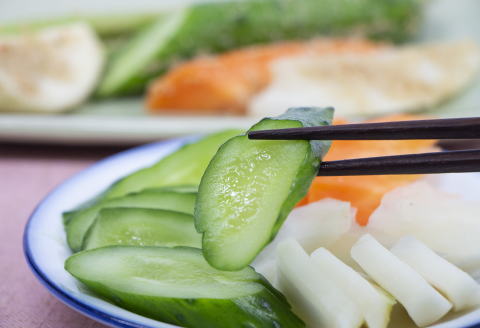
Ingredients
- 1 mature “nukadoko” rice bran bed (available from Yoshima farm in 500g or 1kg).
- Vegetables of your choice, such as carrots, cucumbers or radishes.
How to make it
- Put the nukadoko in a clean container and burry your vegetables in it.
- Pat down the nukadoko with your hands to eliminate air pockets and cover with a lid.
- Let ferment at room temperature. The vegetables need to ferment for at least 12 hours and up to 2 days (depending on the vegetable, its size, etc.). Cutting the vegetables lengthwise in a stick shape will speed up the fermentation. Try after 12 hours and leave them longer if needed. The taste should be pleasantly sour and the texture crunchy. If left too long, the flavour can get too strong and too salty. If the temperature is very high, let it ferment in the fridge to avoid it turning too sour and to prevent spoilage.
- Once ready, brush off the excess bran from the vegetables back into the
bed and rinse before serving.
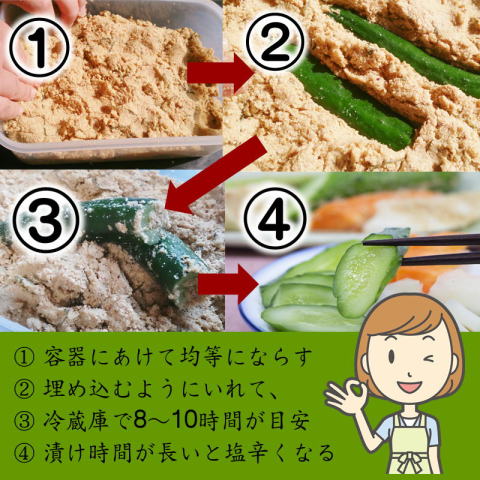
Nukadoko maintenance
- Stir your nukadoko regularly to prevent spoilage, at least 3 times a week.
When temperature is high, stir it once a day. Stirring will prevent too
much fermentation or spoilage (anaerobic bacteria grow too much in the
absence of oxygen).
- If you see a white film forming on the surface, gently remove it with a spoon (do not stir it in).
- Make pickles regularly to keep nurturing your nukadoko, ideally twice a week.
- Drain excess water which accumulates from the vegetables. You can use kitchen paper to absorb it.
- Refresh the bed once a week, adding more rice bran and salt (10g salt and 100g rice bran).
- If you are away or cannot maintain your nukadoko for a few days, you can store it in the fridge. If you are away for more than a week, it is best to put it in the freezer. Once you take it out, leave it at room temperature for 2 days to let the lactic acid bacteria “wake up”. After that, refresh your nukadoko by adding rice bran and salt (10g salt for 100g rice bran).
“Nukadoko” - Rice bran bed for pickling
Ingredients
- 250g toasted rice bran
- 50g salt
- 300ml water
- Optionally, you can add seasonings. Kombu (dried kelp) is often used in Japan, but you can add dried chilies, dried shiitake mushrooms or dried ginger too. You can also add vegetables scraps if you have any. This will help feed the bed with good bacteria.
How to make it
- Mix the salt and the water until the salt dissolves.
- Put the rice bran in your fermentation vessel. Pour the salt water slowly over the rice bran and mix with clean hands.
- Add the seasoning if using any and mix again.
- Pat down the mixture with your hands to eliminate air pockets. Cover with a lid and leave a small opening.
- Let ferment at room temperature. Do not mix during the first week. After the first week, mix once every two days. Your nukadoko should be ready after 2 weeks in total.
- Once you have a mature nukadoko, always save some to add when you are making a new batch to help it start fermenting.
“Doburoku” sake
Doburoku is considered a parent of Japanese sake
It is an unfiltered, alcoholic beverage made from rice. It has a slightly sweet taste with a fruity aroma. Freshly made, it will become lightly sparkling after you bottle it.
Ingredients
- 150g cooked rice
- 250g rice koji
- 300ml water
- 1tsp dry yeast (regular bread yeast)
How to make it
- Mix all the ingredients in a vessel.
- Cover and let ferment at room temperature for about 5 to 10 days, stirring once a day. The fermentation will be much quicker in summer.
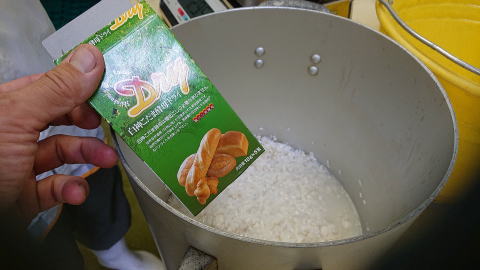
- Once done, you can drink it as it is, with partially solid rice grains (this is how it is drunk traditionally). If you prefer a smooth texture, you can mix in a bender. Enjoy it chilled. You can also try it mixed with fruit of your choice (strawberry, peach, …).
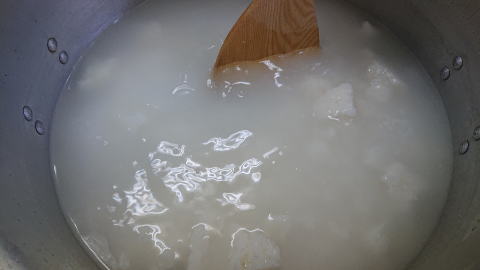
From rice to alcohol ,from alcohol to vinegar
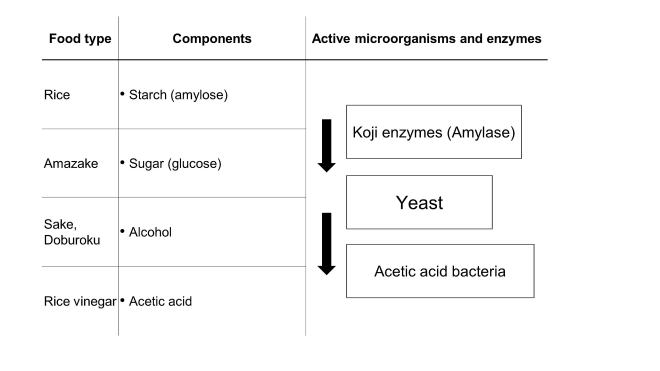
Rice transformation
- When koji enzymes break down the starch present in rice into sugar (glucose), this gives amazake, a sweet rice beverage.
- As yeast feeds on the glucose, it produces alcohol. Depending on the production method, this gives either Japanese sake or Doburoku.
- The alcoholic beverage can be either sterilised (at 85°C core temperature during 10 minutes) to be preserved, or left to be transformed into vinegar through the action of acetic acid bacteria (which transform alcohol into acid).
Food preservation methods
(Yasunori yoshima 2023)Preserving through acidity and temperature
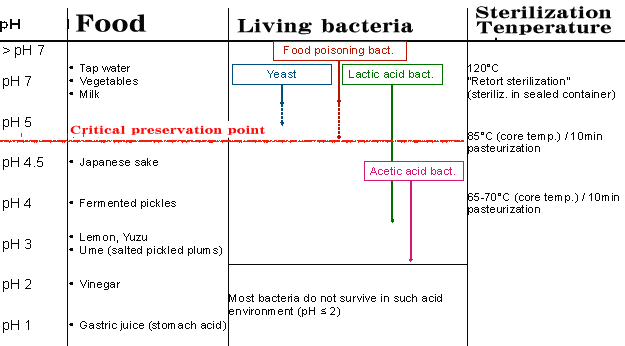
Fermented pickles
- When fermenting vegetables, lactic acid bacteria, which are naturally present in plants, animal products and in our bodies, feed on the carbohydrates from the vegetables to grow.
- As the lactic acid bacteria grow and multiply, they produce lactic acid.
- This lactic acid lowers the pH of the environment, making it more acid. This helps preserve the food by preventing the growth of undesirable bacteria. This is also what gives fermented pickles their pleasant sour taste.
Preserving through salt
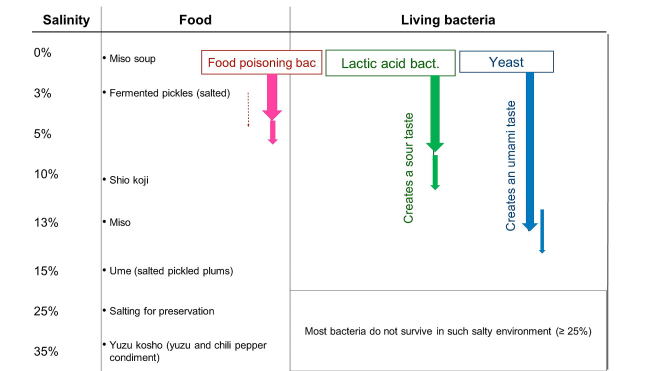
The role of salt
- Salt acts as an inhibitor to fermentation. The lower the salt content, the faster the fermentation.
- Miso with a lower salt content will allow more lactic acid bacteria to grow and will be therefore more sour.
- Above 25% salt content, most bacteria cannot survive.
